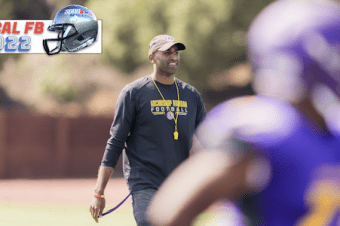HEALTH WATCH: Plica Syndrome: A painful form of knee irritation
CalHiSports InsightsMulti-Sport May 23, 2012 SportStars 0
By Nirav K. Pandya
Pain around the knee cap is a common problem that many young athletes face today, and is commonly seen by physicians who take care of sports medicine injuries. The majority of the time these injuries get better with rest, anti-inflammatory medications such as ibuprofen, and physical therapy.
Yet, in a certain sub-set of patients, the pain continues and greatly inhibits athletic performance. In certain severe cases it can even interfere with day-to-day activities. If pain continues even after conservative treatment most physicians will order an MRI, an imaging study that lets the physician look closely at the cartilage and ligaments in the knee to see if another injury is being missed.
But what happens if the MRI is negative and you still have pain? Many athletes with chronic discomfort around the kneecap will search the Internet looking for answers, and will stumble upon something called Plica Syndrome. What is a plica and why does it cause trouble?
The plica is a band of synovial (joint lining) tissue which can become pinched between the femur (thigh bone) and the patella (knee cap). Although we have multiple plicas in our knee, the plica on the inside (medial) of the knee most commonly causes discomfort in athletes.
The plica serves no function for us once we are born, and is remnant from when we were embryos. During fetal development, the plica divides the knee into multiple compartments, and then becomes much smaller during the second trimester after it has helped to organize the knee. For the majority of people, this remnant causes no problems. I like to refer to it as the appendix of the knee.
For reasons which are not completely clear, certain people are prone to having this band of tissue become irritated whether it be from an acute injury, overuse, or poor biomechanics. Over time, a chronically irritated plica becomes inflamed and thickened. This leads to pain as this thick, inflamed band of tissue gets pinched between the femur and the patella during repetitive athletic activity. In severe cases, it can become so thickened that it can begin to rub cartilage off the femur or patella.
So how do you know if you have an inflamed plica? Unfortunately, there is not one “special” test that can lead to this diagnosis, and many times it’s not found until you have failed extensive conservative treatment for patellofemoral syndrome (i.e. irritated knee cap syndrome). Generally, patients will complain for several months of pain near the knee cap on the inside (medial) part of the knee. Some patients will even feel a tender, thickened band of tissue in this location which is becoming caught under the knee cap between 30 to 70 degrees of knee flexion. As mentioned above, MRI’s usually can’t help to differentiate a normal plica from an inflamed one.
As with any non-traumatic knee injury, if your physician suspects you have plica syndrome the first line of treatment is rest, activity modification, anti-inflammatory medications, and physical therapy to decrease inflammation around the plica. If these treatment methods fail (and a MRI does not show any other injury), then surgical treatment is an option if the pain is prohibiting one from functioning.
Surgery is done arthroscopically (through small incisions with a camera) in which the entire knee joint is examined, and the plica is removed with a small shaver. Patients go home after surgery, and are generally able to start walking without crutches in a couple of days after the procedure. Most people are able to return to nearly full activities in 6-8 weeks based on how much irritation the plica has caused in the knee joint.
If your knee pain is not getting better, it might be your plica. Ask your physician to consider this diagnosis before it (and you) gets too irritated!
Dr. Nirav K. Pandya is a pediatric orthopedic surgeon specializing in pediatric sports injuries at Children’s Hospital in Oakland. He sees patients and operates in Oakland and our facility in Walnut Creek. If you have any questions or comments regarding the “Health Watch” column, write the Sports Medicine for Young Athletes staff at Health@SportStarsOnline.com.
SportStars
SportStars Magazine: High School Sports Articles Online SportStars is your go-to source for the very best high school sports articles in California. Player and team profiles, game coverage, health and fitness tips and the largest Camps, Clinics & Combine resource for athletes. We're the story behind the stats.










No comments so far.
Be first to leave comment below.